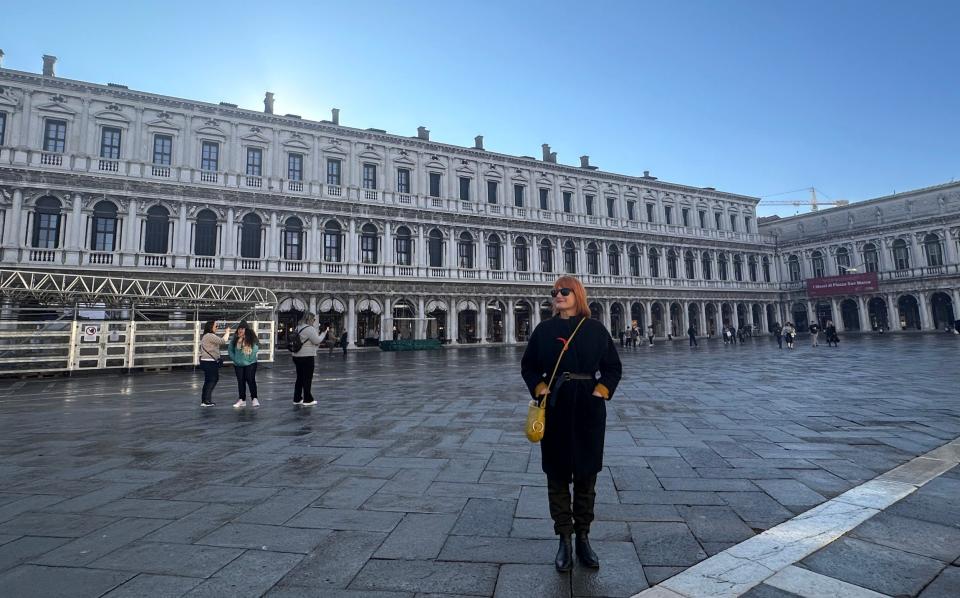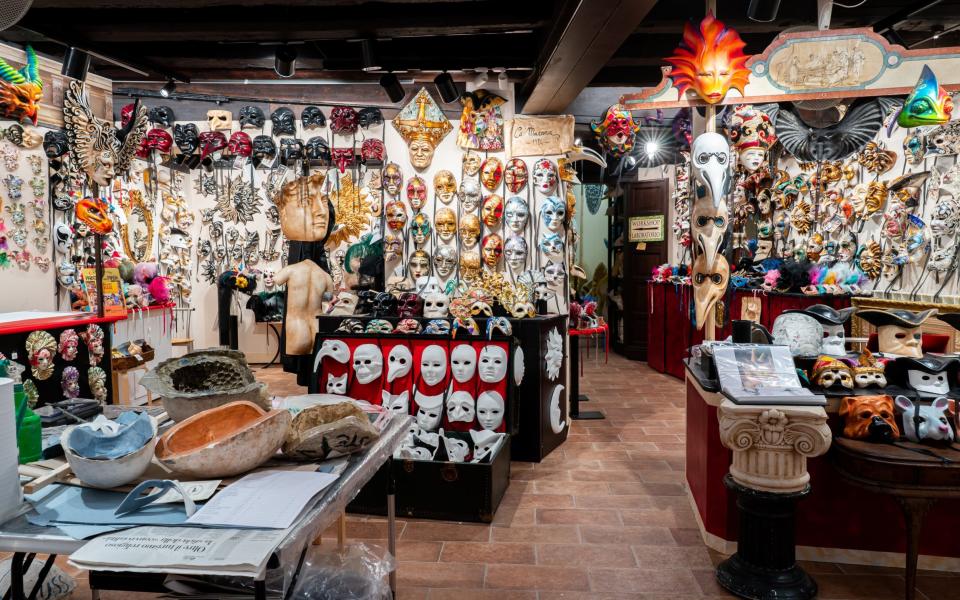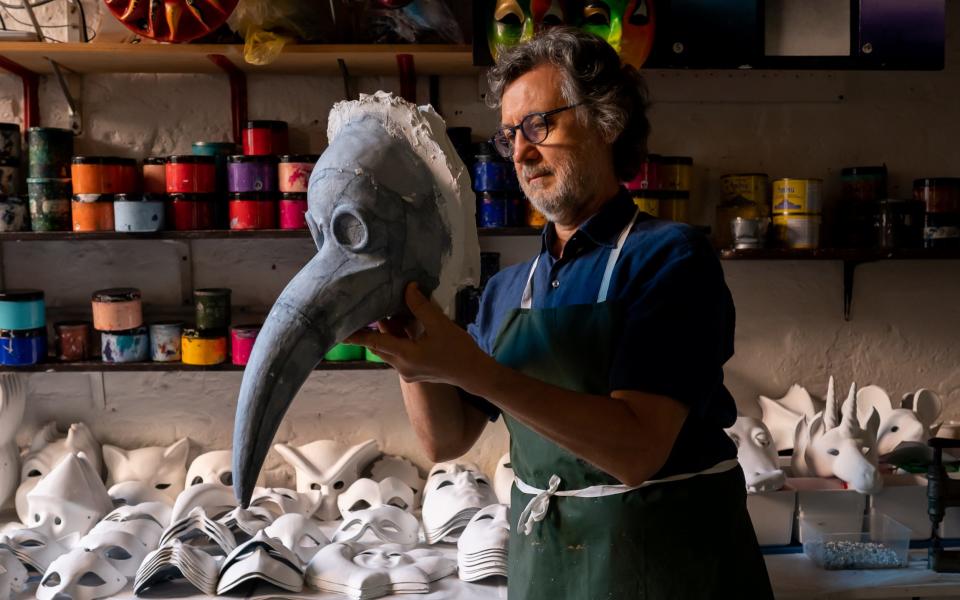Why Venice is Europe's ultimate winter city break

The almost-empty water taxi juddered and made a strange, ethereal whine, as if whales were involved in propelling it. Approaching Venice a week before Christmas, we were enveloped in light: silver-blue meeting pearly sky. Lacelike palaces and domes, a mirage, began to sharpen. Venice is at its loveliest in winter.
There’s a new reason to visit Venice outside peak times. In 2024, the city is trialling a daily tax of £4.30 (€5), with a complicated system of timings from April to July. All visitors must register, with many exclusions. Venice’s councillor for tourism, Simone Venturini, emphasises that the aim is to reduce “hit-and-run” visits, saying, “Venice is, and will always remain, an open city.”
Resident podcast host and author, Monica Cesarato, confided in Telegraph Travel that she is unsure the tax will have the desired impact. “It would be better to curb the numbers of Airbnbs,” she said. “To educate visitors and promote long stays.” She offered me a mass of recommendations for my winter visit, from jazz concerts to the city’s best hot chocolate (Vizio Virtù, with recipes dating from the 1800s). “It’s cheaper to travel, so you can stay longer. All the museums are open and more enjoyable as there are fewer people. Obviously some of the restaurants are closed, but you have the opportunity to go to the well-known restaurants that are usually all booked up.”

In December the city felt echoingly quiet compared with my last stay, in July. We glimpsed figures hurrying away at the end of narrow calli, and Venetians walking their dogs. At one point, we turned a corner to see a flower-crowned coffin aboard a boat; mourners gathered canalside. Washed-out, delicate skies became splashed in yellow, orange and gold. On grey days, the city’s powder-pink and pistachio walls were muted, as if viewed through a veil. We walked through the alleyways of Dorsoduro at dusk and the only sound was our footsteps and the mournful honk of seagulls. As a sunset billowed yellow across the sky, we watched as the gulls zigzagged as if sky-writing in spidery script.
I had been nervous that we risked acqua alta (high water), but “with the MOSE [the system of flood barriers inaugurated in 2020] the threat is not as bad as it used to be,” Cesarato told me. “Of course, you do risk bad weather, but there’s so much to see indoors. The atmosphere is also magical here when we have the fog. And, when the sun shines, there are skies like I have never seen anywhere else.”
We were a little disappointed to miss out on fog, but instead had several days with so much sun that people stood canalside, faces upturned like sunflowers. Under a bright pink-blue sky, we walked to San Marco. On the way there was a born-out-of-frustration sign in English, reading “keep to the right, in two,” but now we strode through unimpeded. There was – of course – a queue at St Mark’s Basilica, but it was undauntingly short.

I’d been told that even off season, I should book in advance, but I found same-day tickets for the Peggy Guggenheim Museum and so we ambled around the grand villa that houses the heiress’s extraordinary art collection, with works by Picasso, her former husband Max Ernst, and alleged lover Jackson Pollack. We examined the sculpture garden with its works by Barbara Hepworth and Anish Kapoor, and ate winter Venetian staples in the Guggenheim café; bean soup scattered with radicchio, and veal meatballs.
Winter, too, is the ideal time to take courses run by local artisans. We headed to maskmaker Ca’ Macana, who revived the craft in the 1980s. Passing through a workshop where women were busy finishing plaster-moulded masks felt like going backstage. We learnt how to grade and stipple, and then were left to paint, varnish, and add heels and feathers. It was a great thing to do with kids.
As evening fell, the empty streets, lined with furled sunshades, had an elegiac melancholy. Even though it was cold outside, the patrons of the cicchetti bars still spilled on to the street, and we joined the throng outside Cantine del Vino già Schiavi. Some wore flat caps; Italians were layered in puffas as if for apres ski; one man was in a Venetian cape. Using the canal wall as a table, we snacked on artichoke, baccalà, spicy salami, gorgonzola and pear, washed down with an ombre (shadow) of wine.

I talked to resident Jane de Mosta from local conservators’ We are Here Venice. “In winter, with less tourist crowds, more of Venice’s beauty is revealed. It’s more peaceful,” she said, echoing the refrain that visitors should stay longer. “Be mindful of the locals and make your holiday as long as possible, to have time to explore and learn about this unique civilisation,” she advises future potential visitors.
Cesarato, too, gave me some pointers. “Don’t take up artisans’ time without buying anything, and then buy cheap reproductions from the shop next door,” she said. “Research the city, read guidebooks, listen to podcasts, get to know the people before arriving: be an informed traveller.”
With the new tax and attendant bureaucracy on the horizon, it was a pleasure to experience this beautiful city off-season, and it felt as though it had been reclaimed by its residents. To discover what is behind the mask, come to Venice for longer, travel smarter, and visit in winter.
Essentials
Palazzo Veneziano (00 33 1 4029 4732; palazzoveneziano.com) is a comfortable four-star hotel in a quiet Dourodoso waterfront location. It faces Giudecca and is next to Zattere vaporetto stop. There are some canal-view rooms, but these can be noisy and are not always worth the extra cost. Double rooms cost from £87 in winter; includes breakfast.
You can fly to Venice from numerous UK airports with easyJet (easyjet.co.uk), BA (britishairways.com) or Ryanair (ryanair.com), with return flights from £100. The best (if slower) way to approach the city is by Alilaguna boat (alilaguna.it) from the airport; the most scenic route is the orange line.


